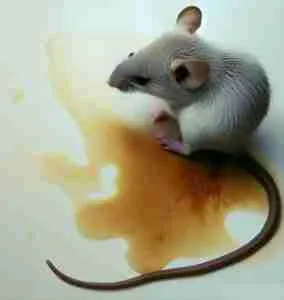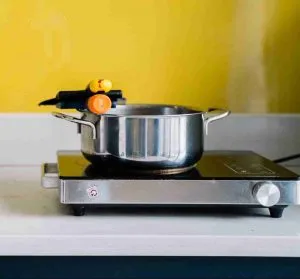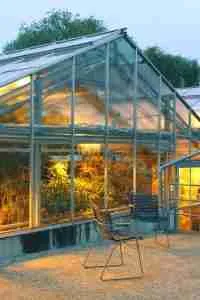Contents
ToggleIntroduction: The Unique Beauty of Strawberry Vanilla Hydrangea Tree
The strawberry vanilla hydrangea tree: an exquisite marvel. This stunning tree boasts a distinct beauty that captivates onlookers. Its unique blend of strawberry and vanilla hues creates a visually pleasing display. Its allure lies in its ability to transform any landscape into an enchanting oasis.
This article delves into the fascinating history and exceptional qualities of this remarkable tree. If you’re curious about the broader mechanics of how plants thrive, check out this comprehensive guide.
Where to Plant Vanilla Strawberry Hydrangea
Vanilla Strawberry Hydrangea, also known as strawberry vanilla hydrangea tree, thrives in well-draining soil with partial sunlight. It is a popular choice for gardeners looking to add vibrant colors to their landscape.
Consider planting it in a location that receives morning sun and afternoon shade to avoid scorching the delicate flowers. This hydrangea variety also requires regular watering to maintain its beauty throughout the growing season.
A helpful tip is to add a layer of mulch around the plant to help retain moisture and prevent weed growth.
How and When to Plant Vanilla Strawberry Hydrangea

The planting process for the Vanilla Strawberry Hydrangea involves specific steps and considerations. Here’s a concise guide on how and when to plant this beautiful flowering tree:
- Site Selection: Choose a location with well-drained soil and partial shade. Avoid areas with excessive sunlight or high winds.
- Soil Preparation: Before planting, amend the soil with organic matter to improve drainage and fertility. Aim for a pH level of 6.0-6.5, slightly acidic to neutral.
- Planting Time: The ideal time to plant Vanilla Strawberry Hydrangea is in early spring or fall when the weather is mild. Avoid planting during extreme temperatures or frosty conditions.
- Digging the Hole: Dig a hole that is twice as wide and deep as the root ball. Loosen the soil at the bottom of the hole to encourage root growth.
- Planting Process: Gently remove the tree from its container and position it in the center of the hole. Backfill the hole with soil, ensuring that the root crown is level with or slightly above the ground. Water thoroughly after planting.
In addition to these steps, it is important to note that the Vanilla Strawberry Hydrangea adapts well to various climates and is known for its robust growth. Its large cone-shaped clusters of flowers transition from creamy white to strawberry pink, creating a stunning visual display in the garden. The tree also provides habitat for pollinators and is relatively low maintenance.
One gardener, Sarah, shared her experience of planting the Vanilla Strawberry Hydrangea. She was amazed by the vibrant color-changing blooms and how the tree attracted bees and butterflies to her yard throughout the blooming season. The Vanilla Strawberry Hydrangea became the centerpiece of her garden, adding beauty and charm.
Taking Care of your Vanilla Strawberry Hydrangea
To ensure the well-being of your cherished Strawberry Vanilla Hydrangea, follow these simple steps:
- Planting: Select a suitable location with partial shade and well-draining soil. Dig a hole twice the size of the root ball and gently place the plant, backfilling with soil while ensuring it remains level with the ground.
- Watering: Hydrangeas require regular watering, especially during dry periods. Keep the soil consistently moist but not overly saturated. Avoid wetting the leaves excessively as it may promote disease. If your hydrangea ever shows signs of distress, learn how to revive it here.
- Fertilizing: Apply a balanced slow-release fertilizer in early spring when new growth emerges. Reapply every 6-8 weeks until midsummer. Avoid excessive nitrogen, as it can hinder flower development.
- Pruning: Prune your Vanilla Strawberry Hydrangea in late winter or early spring to remove dead wood and encourage new growth. Remove spent flowers by cutting back to a healthy bud to promote a neater appearance and potential reblooming.
Additionally, note that the Vanilla Strawberry Hydrangea exhibits stunning color variations throughout the blooming season, ranging from creamy white to vibrant strawberry pink. This distinct feature adds unparalleled charm to any garden or landscape.
A fascinating fact about this unique cultivar is its name, which aptly describes the vanilla-like fragrance emitted from its blooms. This delightful scent, combined with the tree-like habit of the plant, makes it a captivating addition to any outdoor space.
Potting and Repotting Vanilla Strawberry Hydrangea
Potting and repotting the Vanilla Strawberry Hydrangea involves specific steps to ensure the health and growth of this beautiful plant.
Follow this 6-step guide:
- Choose the right pot: Select a container that provides adequate drainage and is slightly larger than the current root ball of the plant.
- Prepare the potting mix: Use a well-draining soil mix with a pH level suitable for hydrangeas, ideally enriched with organic matter.
- Remove the plant from the current pot: Gently tap the sides of the pot to loosen the root ball and carefully remove the plant.
- Prune and trim: Trim any damaged or excessively long roots and prune the top growth to encourage new growth.
- Place the plant in the new pot: Position the plant in the center of the new pot, ensuring that the top of the root ball is level with the rim of the pot.
- Fill the pot with soil: Fill the remaining space in the pot with the prepared potting mix, firming it gently around the root ball.
To further enhance the potting and repotting process, it’s beneficial to provide adequate water and light, along with regular fertilization and proper care.
Dealing with Pests and Common Problems

Dealing with Pest Infestation and Common Issues is crucial when caring for your strawberry vanilla hydrangea tree. Maintain a healthy environment by regularly inspecting the plant for pests and promptly addressing any problems. Ground moles can also disturb your garden; learn how to deal with them here.
Additionally, implementing organic pest control methods and providing proper watering and fertilization can help prevent issues. Protect your plant from common problems such as powdery mildew and root rot by ensuring proper air circulation and well-draining soil.
Apply horticultural oils and insecticidal soaps to combat pests like aphids and spider mites.
Conclusion: Adding the Uniqueness of Strawberry Vanilla Hydrangea to Your Garden
Picture this: a garden alive with the dulcet tones of strawberry and vanilla, each breeze carrying the fragrance, the very essence, of summer. This is the magic woven by the Strawberry Vanilla Hydrangea, a stellar choice for those looking to sprinkle a bit of the extraordinary into their gardens.
Beyond its alluring scent, this hydrangea is a visual marvel. Its blooms transition seamlessly from creamy whites to deep pinks as summer progresses. Not just a treat for the senses, this hydrangea is a gardener’s dream too. Its adaptability is evident whether in spacious gardens, intimate patios, or chic containers. Plus, its compact stature makes it a snug fit for even the coziest of spaces.
For a garden vignette that lingers in the memory, pair the Strawberry Vanilla Hydrangea with plants that amplify its beauty, such as pansies. Discover how long pansies last and consider them as a complementary addition. Let it play the lead in a floral ensemble, creating symphonies of color and fragrance.
In essence, the Strawberry Vanilla Hydrangea isn’t just a plant—it’s an experience, a mood, an emotion. If your garden is your canvas, let this hydrangea be your masterpiece. Dive in and let this unique bloom redefine your garden’s narrative.
Five Facts About Vanilla Strawberry Hydrangea Tree:
- ✅ Vanilla Strawberry hydrangea (Hydrangea paniculata ‘Renhy’) features showy white flowers with pinkish centers that turn a deeper blush as they age. (Source: Better Homes & Gardens)
- ✅ This hydrangea variety blooms continuously all summer long, creating a multi-colored effect with bright-white new blooms and reddish-pink ones. (Source: Better Homes & Gardens)
- ✅ Vanilla Strawberry hydrangea is a hardy shrub that grows in Zones 3-9 and can thrive in most areas of the country. (Source: Better Homes & Gardens)
- ✅ This shrub prefers full sun and soil that is rich in organic matter, moist, slightly acidic (pH between 6.0 and 6.5), and well-drained. (Source: Better Homes & Gardens)
- ✅ Vanilla Strawberry hydrangeas can be planted as back-of-the-border or foundation shrubs, flowering hedges, or specimen plants that stand out. (Source: Better Homes & Gardens)
FAQs about Strawberry Vanilla Hydrangea Tree
Where should I plant Vanilla Strawberry Hydrangea?
Vanilla Strawberry Hydrangea does best in full sun. It grows to a mature height of 6 to 7 feet and a spread of 4 to 5 feet, so make sure to plant it where it will have enough room. It can be planted in the back of the border, as a foundation shrub, or as a flowering hedge plant.
What kind of soil does Vanilla Strawberry Hydrangea prefer?
The soil should be rich in organic matter, moist, well-drained, and slightly acidic (pH between 6.0 and 6.5). If the soil is poor, you can add compost to improve its quality.
When is the best time to plant Vanilla Strawberry Hydrangea?
The best times to plant Vanilla Strawberry Hydrangea are in spring before rapid growth sets in and in late autumn, when the shrub is dormant. The hole should be deep and wide enough for the root ball, and the stem should be at the same soil depth as it was in its container.
How do I care for Vanilla Strawberry Hydrangea?
Vanilla Strawberry Hydrangea prefers sunlight but can tolerate partial shade. Keep the plant well-watered, especially after planting. In warmer climates, provide some afternoon shade. Fertilize it occasionally with organic mulch and prune it in late winter or early spring to encourage new growth.
Can I grow Vanilla Strawberry Hydrangea in a container?
While Vanilla Strawberry Hydrangea might fit in a large container for the first two years when it is small, it will eventually outgrow the container. It is best to plant it in the landscape from the beginning. If you prefer hydrangeas in containers, consider dwarf varieties like Little Quick Fire.
Are Vanilla Strawberry Hydrangeas good for cut flowers?
Yes, Vanilla Strawberry Hydrangeas make excellent cut flowers. You can snip off the blooms and group them together for stunning hydrangea bouquets. You can also add complementary blooms in purple and yellow as well as foliage for more variety. The flowers can also be cut and dried for indoor decor.
Additional Reading
If you’re keen on broadening your gardening expertise further, these additional resources will enhance your knowledge across various aspects of gardening:
- Growing Pumpkins in Small Spaces: If space is a constraint, yet you wish to diversify your garden, learn how to cultivate pumpkins even in tight areas, ensuring a fruitful harvest.
- How to Grow a Cherry Tree from Seed: Experience the joy of nurturing a cherry tree right from its seed stage. Dive into this guide and understand the nuances of cultivating cherry trees.
- Cleaning Fruit with Baking Soda: Safety and cleanliness are paramount when it comes to fruits. Discover how the simple household ingredient, baking soda, can be used effectively to clean and disinfect your fruits.
- Best Tomatoes for Canning: If you’re into preserving foods, this article provides insights on the ideal tomato varieties best suited for canning, ensuring long-lasting and flavorful produce.
- Companion Plants for Corn: Maximizing yield and ensuring the health of crops is key. Dive into the world of companion planting with corn and learn how specific plants can bolster corn’s growth and protect it from pests.























































